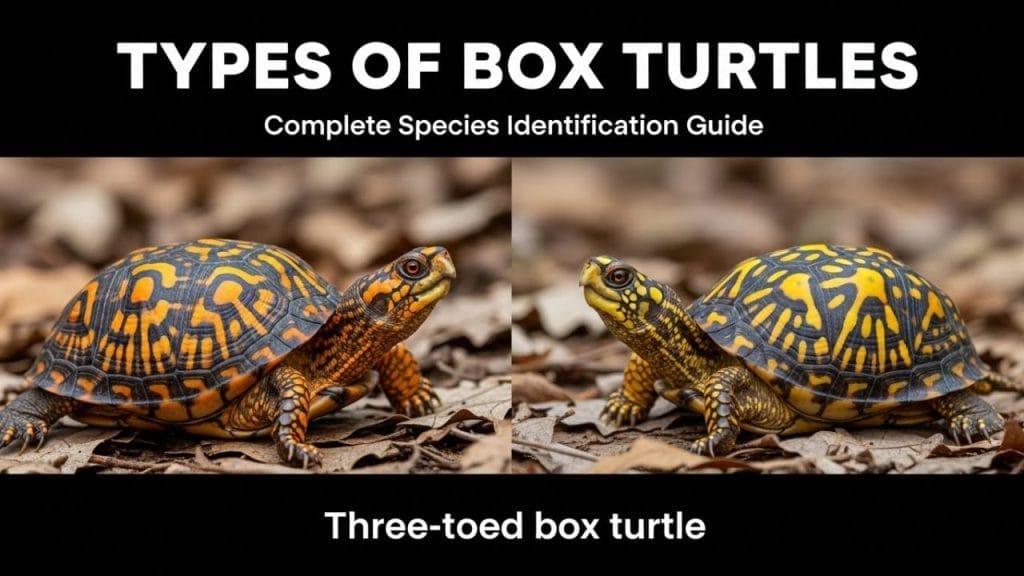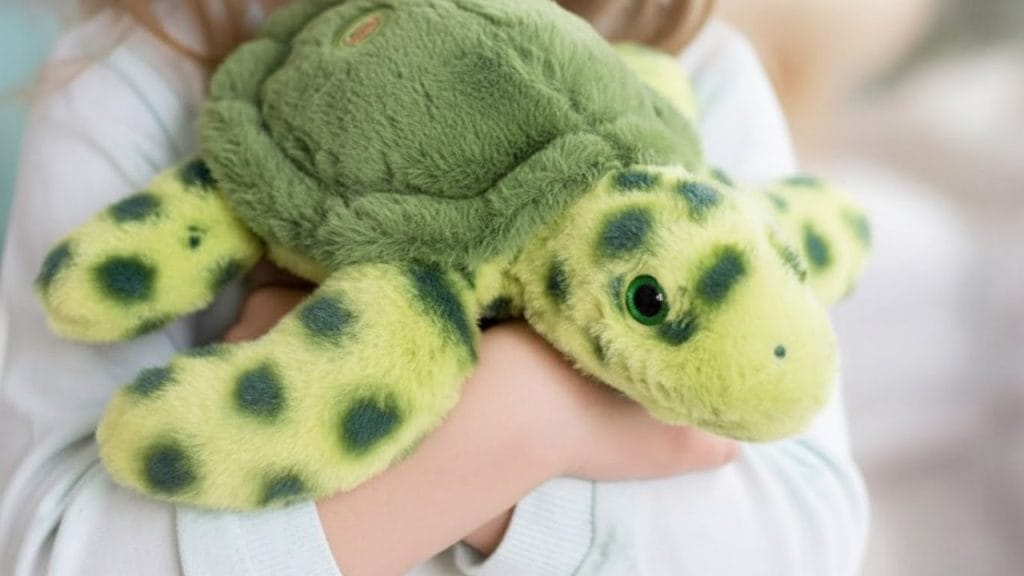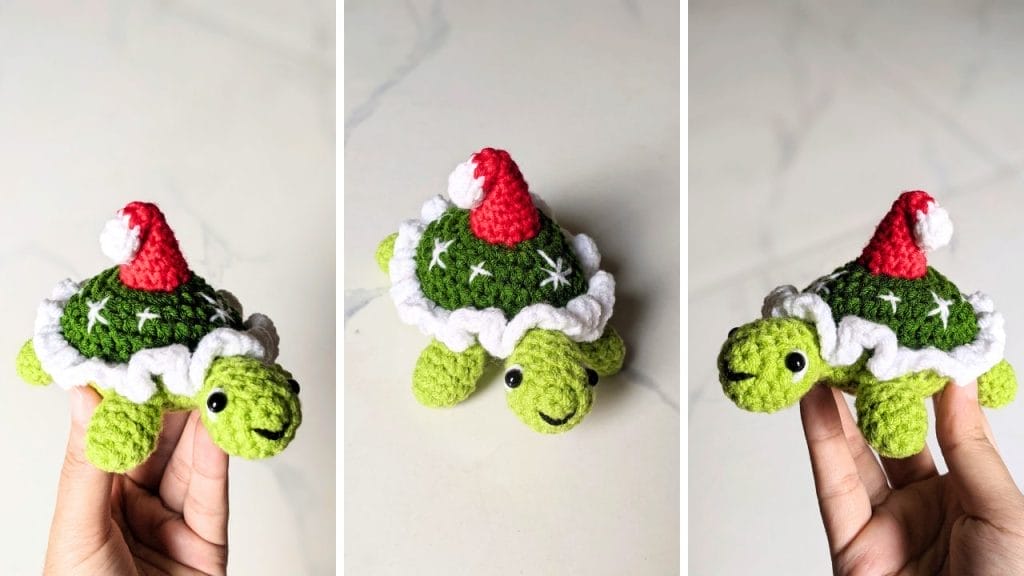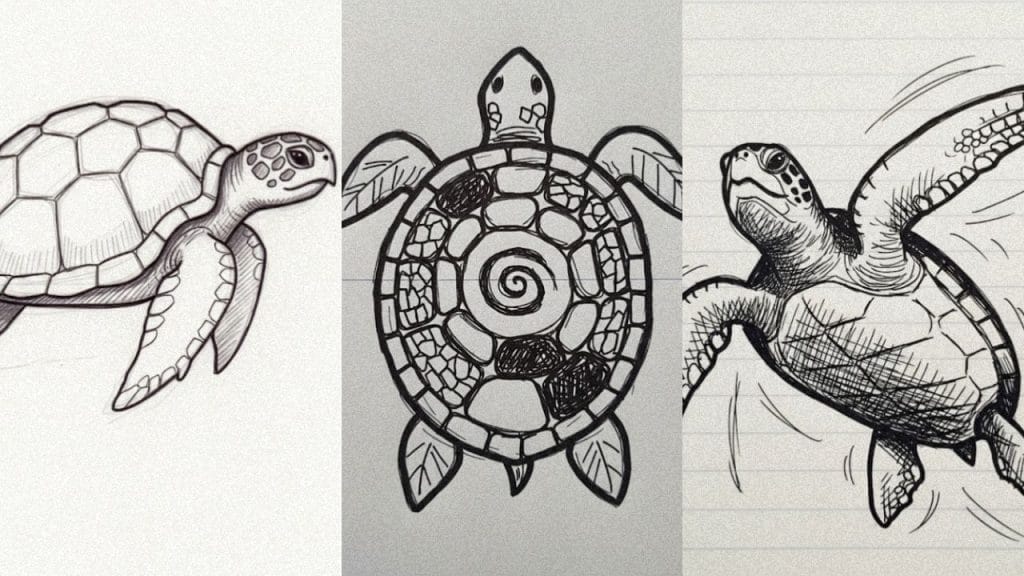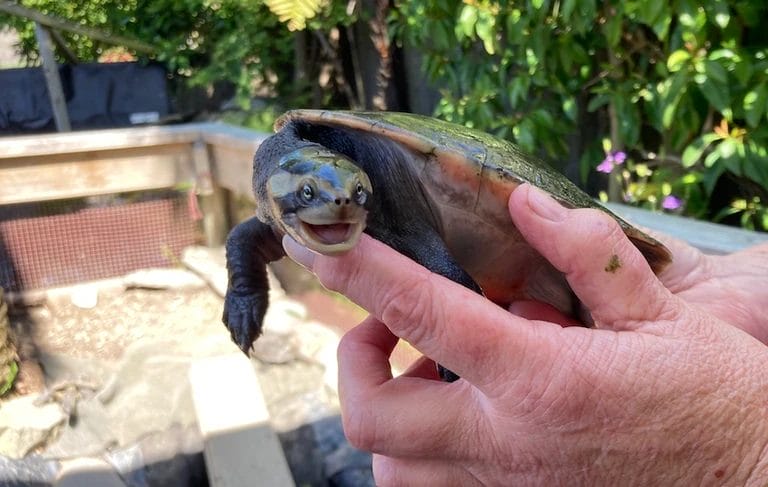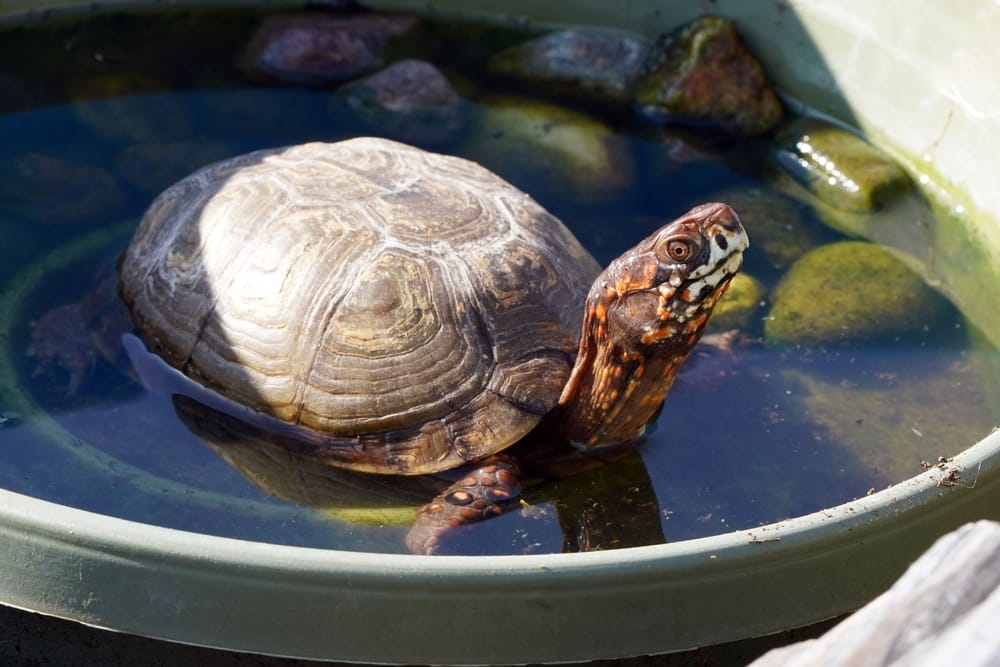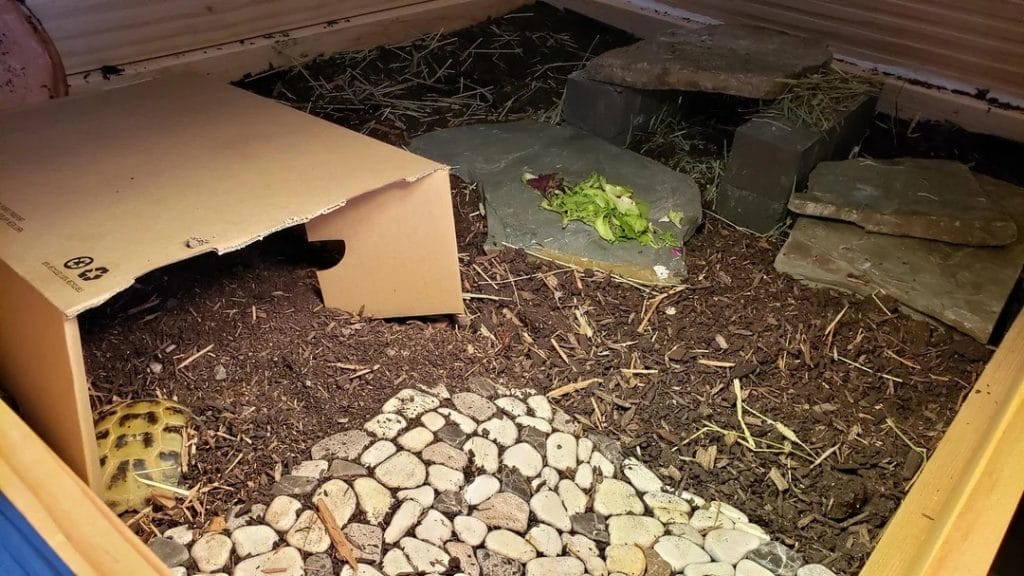How To Take Care Of A Softshell Turtle? [Beginner’s Care Sheet]
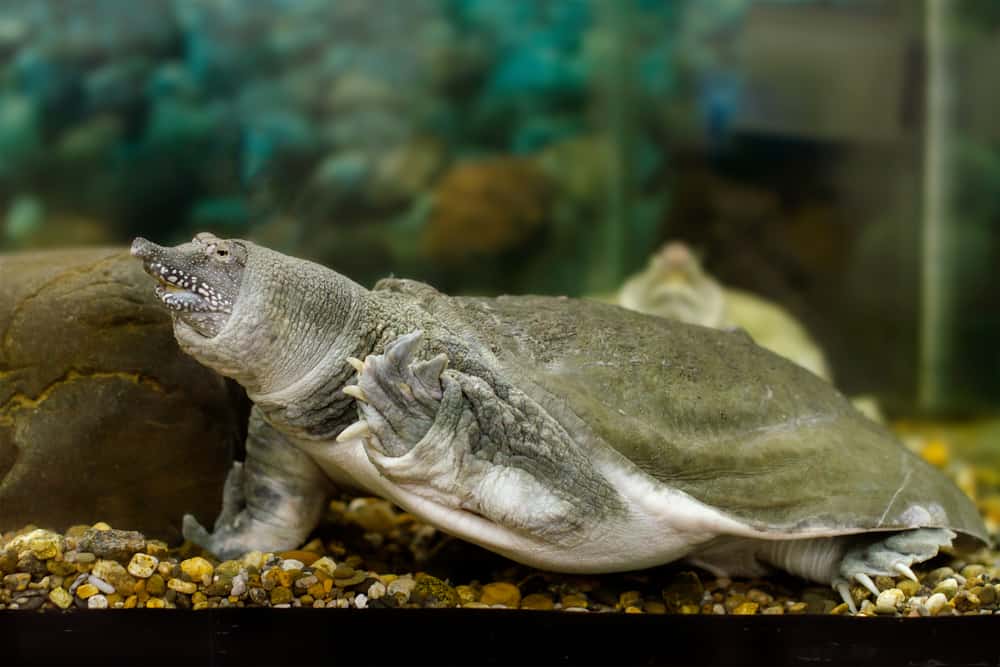
This post was created with help from AI tools and carefully reviewed by a human (Muntaseer Rahman). For more on how we use AI on this site, check out our Editorial Policy.
So you saw a softshell turtle at the pet store and thought, “That’s the weirdest pancake I’ve ever seen.”
You’re not wrong.
These flat, leathery water potatoes with snorkels for noses look like someone left a regular turtle in the dryer too long. But don’t let their goofy appearance fool you—softshell turtles are actually some of the most interesting (and challenging) turtles you can keep as pets.
Before you bring one home, though, let me be straight with you: these aren’t beginner-friendly pets. They’re more like the expert level of turtle keeping. But if you’re ready for the commitment, I’ll walk you through everything you need to know.
Quick Reference Checklist
Before you get a softshell turtle, make sure you have:
- [ ] 75-100+ gallon tank (or larger for Florida softshells)
- [ ] Powerful canister filter (rated 1.5x tank size)
- [ ] Air pump for oxygenation
- [ ] 2-3 inches of fine sand substrate
- [ ] Basking platform
- [ ] Heat lamp for basking (85-90°F)
- [ ] UVB lighting (Reptisun 10.0 or 5.0)
- [ ] Submersible heater (water at 72-75°F)
- [ ] Thermometers for water and air
- [ ] High-quality turtle pellets
- [ ] Live or frozen foods (fish, worms, insects)
- [ ] Calcium powder and multivitamin
- [ ] Aquarium salt
- [ ] First aid supplies (antibiotic cream, antifungal cream)
- [ ] Weekly time commitment for water changes and maintenance
If you can check all those boxes, you might just be ready for the weirdest, most entertaining turtle you’ll ever keep.
What Makes Softshell Turtles So Weird?
Softshell turtles look like evolution had a brainstorming session after too much coffee.
Instead of a hard shell covered in scutes like most turtles, they’ve got a flat, leathery shell covered in skin. It’s squishy, it’s flexible, and it makes them way faster swimmers than their hard-shelled cousins.
They’ve also got a long neck that can stretch halfway down their shell, a tubular snout that works like a built-in snorkel, and big fleshy lips hiding razor-sharp jaws.
Think of them as the ninjas of the turtle world—they bury themselves in sand with just their snorkel sticking out, waiting to ambush passing fish.
Oh, and they can breathe underwater by passing water over gill-like structures in their throat. They can stay submerged for over 2 hours doing this little throat-rinsing trick.
Nature really went wild with these guys.
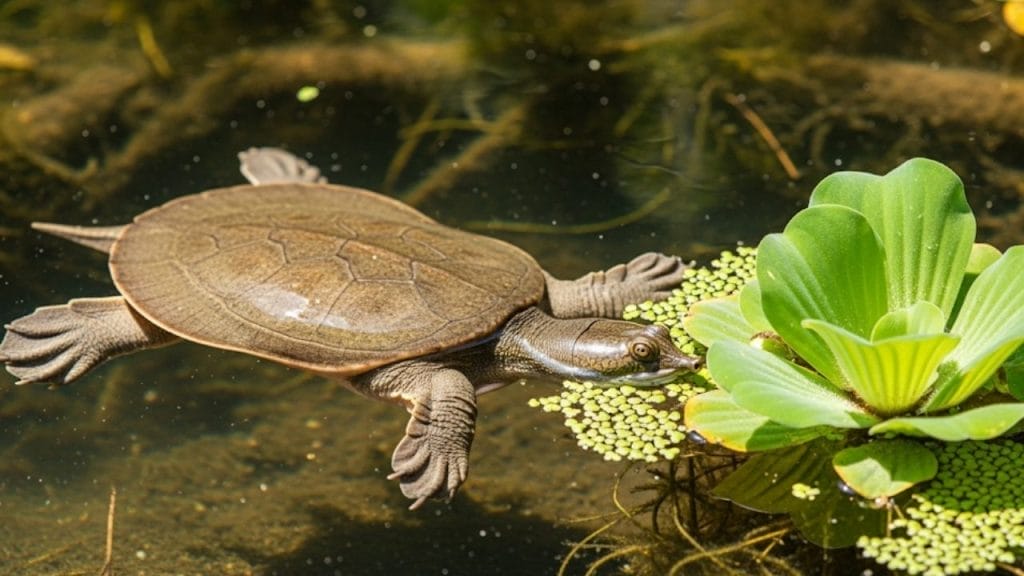
This Hilarious Turtle Book Might Know Your Pet Better Than You Do
Let’s be real—most turtle care guides feel like reading a textbook written by a sleep-deprived zookeeper.
This one’s not that.
Told from the snarky point of view of a grumpy, judgmental turtle, 21 Turtle Truths You’ll Never Read in a Care Guide is packed with sarcasm, sass, and surprisingly useful insights.
And hey—you don’t have to commit to the whole thing just yet.
Grab 2 free truths from the ebook and get a taste of what your turtle really thinks about your setup, your food choices, and that weird plastic palm tree.
It’s funny, it’s honest, and if you’ve ever owned a turtle who glares at you like you’re the problem—you’ll feel seen.
The Three Main Types You’ll See as Pets
Spiny Softshell (Apalone spinifera) Grows up to 14 inches. Has small spines on the front edge of the shell. Most common in the pet trade.
Smooth Softshell (Apalone mutica) Also grows to about 14 inches. Shell is smoother without the spines. More chill than the spiny variety.
Florida Softshell (Apalone ferox) The giant of the group—can hit 24 inches or more. Females get absolutely massive. Not recommended for most people unless you have a pond.
All three can live 20 to 30 years with proper care, so you’re signing up for a long-term relationship here.
Tank Size: Bigger Than You Think
Here’s where most people mess up.
Baby softshells are tiny—about the size of a half-dollar coin. You might think, “Oh, I’ll start with a 10-gallon tank.”
Don’t.
These turtles grow fast, and they need serious swimming room.
| Turtle Size | Minimum Tank Size |
|---|---|
| Babies (1-2 inches) | 20-50 gallons |
| Juveniles/Subadults | 40-75 gallons |
| Adults (Spiny/Smooth) | 75-100 gallons |
| Adults (Florida females) | 100-300+ gallons or pond |
The general rule is 10 gallons of water per inch of shell length. So a 10-inch turtle needs a 100-gallon tank minimum.
For adult Florida softshells, you’re honestly better off with a stock tank, kiddie pool, or backyard pond. Glass aquariums get expensive and heavy at that size.

Sand Substrate: Not Optional
Softshells aren’t happy unless they can bury themselves.
In the wild, they spend most of their time buried under sand or mud with just their snorkel sticking out. This is how they feel safe and how they hunt.
You need 2-3 inches of fine, clean sand in the tank. Not gravel, not pebbles—sand. Fine aquarium sand or play sand that’s been thoroughly rinsed works great.
This isn’t just for fun. Softshells have delicate skin (since they lack hard shells), and sharp rocks or gravel can easily cut them. Those cuts get infected fast in water.
Water Quality: Ultra Clean or Bust
This is where softshell turtle care gets real.
Water quality is absolutely critical because their soft skin absorbs everything. Bad water equals sick turtle, every time.
Water temperature: 72-75°F (22-25°C) pH level: 6.5 to 7.0 (slightly acidic to neutral)
You need a powerful filter—like, way more powerful than you think. Get a filter rated for at least 1.5 times your tank size. So if you have a 75-gallon tank, use a filter rated for 100-125 gallons.
Why? Because softshells are messy eaters and prolific poopers.
Change 25-30% of the water every week minimum. Some keepers with smaller setups do partial water changes twice a week.
Add an air pump too, separate from the filter. Softshells need highly oxygenated water like they’d get in rivers and streams. Still water makes them stressed and sick.
Pro tip: Add a couple tablespoons of aquarium salt per gallon. This helps prevent infections and mimics the brackish water some species prefer.
Water quality issues plague all turtle species, but softshells are especially vulnerable—our top turtle mistakes guide explains why proper filtration is non-negotiable.
Basking Area: Yes, They Actually Need It
“Wait, don’t softshells stay in the water all the time?”
Nope. Common myth.
While they’re way more aquatic than most turtles, they still need to bask. Basking dries out their skin, boosts their metabolism, and prevents shell rot and infections.
Set up a basking platform that’s stable and easy to climb onto. Driftwood, slate, or a commercial turtle platform all work. Some softshells will even bask on floating aquatic plants.
Basking temperature: 85-90°F Ambient air temperature: 74-80°F
Keep one side of the tank cooler so your turtle can choose its temperature.

UVB Lighting: The Life-or-Death Detail
This isn’t optional, it’s life or death.
Without UVB lighting, your softshell will develop Metabolic Bone Disease (MBD). It’s a slow, painful death that takes months to years, causing deformed shells and bones.
Get a Reptisun 10.0 UVB bulb for hatchlings and juveniles, or a Reptisun 5.0 for adults. Place it over the basking area.
Keep it on for 12 hours a day, then 12 hours of darkness at night. Turtles need this day/night cycle.
Replace the UVB bulb every 6-12 months even if it still glows. The UVB output diminishes over time even when the visible light doesn’t.
Feeding: They’re Carnivores With Opinions
Softshells are meat eaters through and through.
In the wild, they eat fish, insects, crayfish, worms, and pretty much anything that swims by their buried head.
For babies: Feed twice a day. Give them as much as they’ll eat in 10-15 minutes. For adults: Feed once a day, same 10-15 minute rule.
What to Feed
- Small feeder fish (guppies, minnows—avoid goldfish, they’re junk food)
- Earthworms and nightcrawlers
- Crickets (gut-loaded with nutrients)
- Freeze-dried shrimp and krill
- High-quality aquatic turtle pellets
- Occasional treats: waxworms, small pieces of fish
Some softshells are picky eaters as babies. One keeper had to sneak pellets in with chicken liver until the turtle learned to accept them. Be patient.
Supplements
Dust food with calcium powder 3 times a week for adults, daily for babies. Add a multivitamin once a week.
You can also keep a calcium sulfa block in the water for extra nutrition.
Handling: Don’t
Softshells have three excellent reasons you should avoid handling them:
- They can bite—hard. Those fleshy lips hide sharp beaks that can deliver bites deep enough to need stitches.
- Their necks are crazy long. They can reach halfway down their shell. You think you’re holding them safely, but surprise—chomp.
- Their shells are delicate. Rough handling can damage their soft skin, leading to infections.
Only handle when absolutely necessary, like for tank cleaning or vet visits.
If you must pick one up, grab it by the rear of the shell, keeping it low and the head pointed away from you. Never grab by the tail.

Common Health Problems
Shell Infections Scratches and cuts get infected easily. Keep antibiotic ointment and Silvadene cream on hand. If the infection doesn’t clear up in a few days, see a vet.
Metabolic Bone Disease Caused by lack of UVB or calcium. You’ll see irregular shell growth and strange curves. Prevention is key—there’s no cure once it’s advanced.
Fungal Infections Common in dirty water. Use antifungal creams from the pharmacy foot care aisle. Add more aquarium salt to the water.
Eye Problems If your turtle keeps closing its eyes, the water’s probably dirty or something’s irritating them. Do a big water change immediately.
Can You Keep Multiple Softshells Together?
Generally, no.
Softshells are solitary and can be aggressive, especially Chinese softshells. They’ll attack each other, and the stress isn’t worth it.
If you absolutely must house multiples, give them a massive tank with tons of hiding spots and make sure they’re similar sizes. But honestly? Just house them separately.
Don’t mix softshells with hard-shelled turtles either. The personality differences cause stress, and the softshell’s delicate skin can get scratched.

The Bottom Line: Are You Ready?
Let’s be real—softshell turtles are high-maintenance pets.
They need pristine water quality, huge tanks, specific temperatures, proper lighting, and a varied diet. Baby softshells are notoriously sensitive and can die easily if conditions aren’t perfect.
If you’re new to turtle keeping, start with hardy species like painted turtles or red-eared sliders before attempting softshells.
They’re recommended for advanced keepers only, not beginners.
But if you can provide what they need, softshells are absolutely fascinating. Watching them bury themselves in sand with just their snorkel poking out, then explode into action when food appears, never gets old.
They’re weird, they’re fast, and they’re way more interesting than regular turtles.
Just make sure you’re committed to 20-30 years of care, because that’s how long you’ll be watching your flat water pancake do its ninja thing.

About Author
Muntaseer Rahman started keeping pet turtles back in 2013. He also owns the largest Turtle & Tortoise Facebook community in Bangladesh. These days he is mostly active on Facebook.


